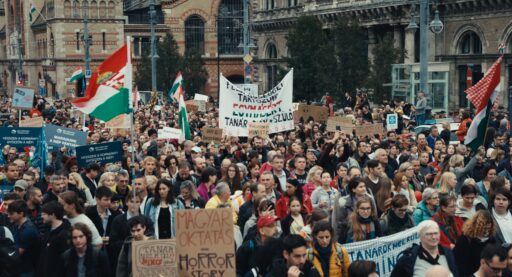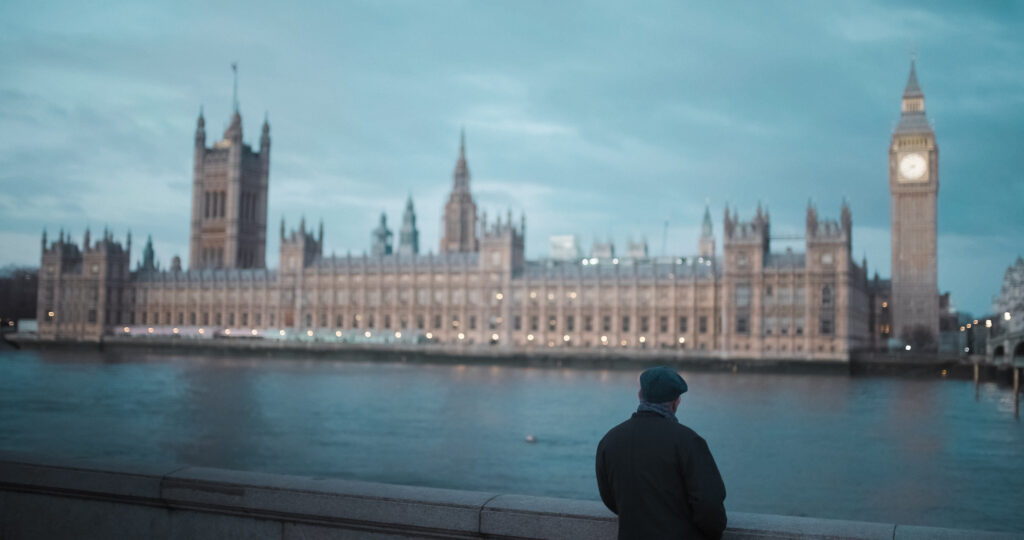Teaching Guide: Make Democracy Great Again
Overview
This guide supports educators in facilitating meaningful engagement with the documentary film, Make Democracy Great Again, produced and narrated by Jan Scherman. The film explores global threats to democracy while highlighting stories of hope and resilience. Through concepts, character studies and thematic discussions, students gain a deeper understanding of democracy’s current challenges, as well as
their crucial role in protecting it.
Objectives
Understand key democratic concepts and terms.
Explore real-world examples of democratic challenges and resilience.
Reflect on personal and societal responsibilities in upholding democracy.
Develop critical thinking through discussion and analysis of themes, characters and events in the film.
Before the Film
Suggested Activities
Key concepts
- Liberal Democracy
- Polarisation
- Freedom of Expression
- Tech Giants
- Extremism
- Autocracy
- Elected Representatives
- Democracy Builders
Help students develop a shared understanding and back ground knowledge of essential concepts to enhance comprehension of the film.
Let students define each term in their own words.
Discuss the relevance of these terms in different social and political contexts.
Activate Prior Knowledge with Pre-Film Discussion
Discussion Questions
- What do you expect from the film?
- What challenges to democracy are you aware of at present?
- What is your experience of democracy in your own life?
- What role do you think young people can play in a democracy?
Introduce Film Themes
Key Themes
Differences between countries & how they affect democracy
Conflicts between people (activism, political beliefs)
Freedom & safety (freedom of expression, daily security)
Public trust & relationships with politicians
Hope — examples of democratic progress & rebuilding
Activities
Assign each group a theme to investigate.
Ask students to find examples of these themes in the current global or local news.
Encourage personal reflections: “How do these themes relate to your own life?”
Meet the Main Characters
Featured Individuals
- Gabriel Erling Peres – Journalist, Ludvika
- Soar Ali – Student, Husby
- Helle Klein – Journalist & Head of Sigtuna Foundation
- Annie Lööf – Former Leader, Centre Party
- Lucinda Evans – Activist, South Africa
- Imran Ahmed – Researcher, London
Activities
Use character portraits (insert link) to introduce each person.
Assign each group a character to research and present.
Discuss each character’s background, motivations and relevance with respect to the message of the film.
While Watching the Film
Guided Observation Tasks
Concept Tracking
Ask students to jot down unfamiliar terms or concepts.
Alternatively, assign specific terms or concepts in advance and ask students to identify examples.
Character Focus
Each group follows their assigned character’s journey.
Observe their challenges, message, and any symbols of hope they bring.
Thematic Focus
Each group tracks their assigned theme.
Identify specific scenes that illustrate the theme.
After the Film
Deepen Understanding of Key Concepts
Activities
Discuss meanings of terms in the context of the film.
Match terms to specific scenes and characters.
Revisit definitions and deepen understanding with examples.
Character Reflections
Let the students recreate the perspectives of the main characters.
Discuss threats, hope, and democratic driving forces based on the situations of the different main characters.
Film Interpretation through Themes
Identify examples from the film that relate to the different themes.
Work in pairs with one theme per group.
Present the analysis in cross-groups.
Post-Film Discussion/Guiding Questions
- Which scene impacted you the most, and why?
- What does democracy mean to you personally?
- What did the film teach you about the state of democracy today?
- What are the root causes and consequences of the democratic challenges shown?
- What can you do to contribute to a stronger democracy?
In-Depth Assignments
Threats and Hopes
Purpose
Identify and categorise various threats to democracy, as well as examples of hope and positive initiatives highlighted in the film.
Implementation
Divide the class into groups or let students work individually.
Let students watch the entire film or selected parts.
The task is to note concrete examples of:
- Threats to democracy (e.g. extremism, polarisation, loss of trust)
- Hope for democracy (e.g. democracy builders, grassroots movements, civic courage)
Students present their results in a two-part list or as a visual overview (e.g. on a board, digital whiteboard or with sticky notes on a wall).
Deepening the Discussion
Discuss what factors lie behind the threats and what gives reason for hope.
Multimodal Text
Purpose
Combine different forms of expression to analyse and present the film’s content.
Implementation
Students choose an event, person or theme from the film.
They create a digital or physical poster with:
- Image(s)
- A brief explanatory text
- Quotes from the film
- Specific colours that enhance the message
- Fast facts about terms, people or contexts
Tools
Canva, Google Slides, PowerPoint or paper and pen.
Role Play
Purpose
Practice perspective-taking and the ability to understand different viewpoints related to democracy.
Implementation
- Divide students into small groups.
- Each group chooses a theme, conflict or scenario from the film.
- Students act out the situation in a short role play that includes everyone.
- Perform live for the class, or record it and show the video to the class.
Examples
- A debate between a democracy builder and an extremist
- A public dialogue about hate and threats
- A meeting between journalists in a corrupt environment
Podcast Episode
Purpose
Practice critical thinking and the ability to express thoughts through dialogue.
Implementation
Students form groups of 2–4 people.
They plan and record a 5–10-minute podcast episode on a theme featured in the film.
Suggested content:
- Reflections on a specific scene in the film
- Discussion about threats versus hope
- Interview format with one of the main characters (played by a student)
- Comparison with a Swedish or international context
Tools
Mobile phone, computer with microphone, simple audio editing programmes (e.g. Audacity, GarageBand).
Writing Assignment
Purpose
Practice students’ ability to argue and express their thoughts in writing.
Types of Assignments (choose one or several)
- Column/Editorial: Write personally and reflectively about a theme from the film.
- Opinion piece: Take a stance on a democratic issue addressed in the film.
- Analysis: Describe and analyse a main character, a threat or a hopeful initiative.
Tips: Use quotes from the film as inspiration. Let students read each other’s texts and give feedback.
Group Task & Democracy Forum
Purpose
Explore democracy’s multifaceted challenges from different perspectives.
Implementation
Divide the students into groups and assign a specific role to each group (e.g. politician, journalist, citizen, activist, democracy builder).
Groups discuss their perspectives, identify challenges, and formulate arguments.
Gather the groups in a “Democracy Forum” where they share their views and engage in dialogue.
One student or the teacher moderates the discussion.
Post-Activity Reflection
How did it feel to speak from someone else’s perspective? What did you learn?
Connection to Reality
Purpose
Create relevance by linking the film’s content to the students’ real-world context.
Implementation
Choose current news articles about democratic developments around the world (e.g. elections, freedom of speech, the role of civil society).
Students discuss the articles in groups:
Any similar themes or concepts shown in the film?
What differences do they see?
What provokes the strongest reactions?
Tips: Use source-critical questions and highlight different perspectives.
Venn Diagram – Threats and Hopes
Purpose
Visualise connections and contrasts within the theme of democracy.
Implementation
Students draw a Venn diagram with two circles: Threats and Hopes.
They list examples from the film on each side.
In the overlap, they note things that can be interpreted as both threats and hopes (e.g. strong reactions that can lead to action).
Reflection
How can a threat also become a seed for change? Are there real-world examples where this has happened?







